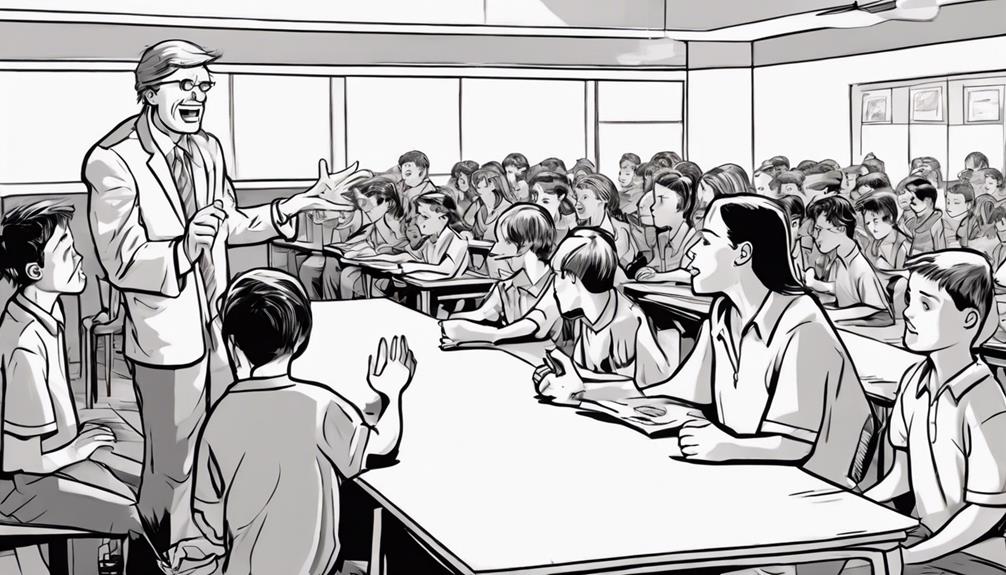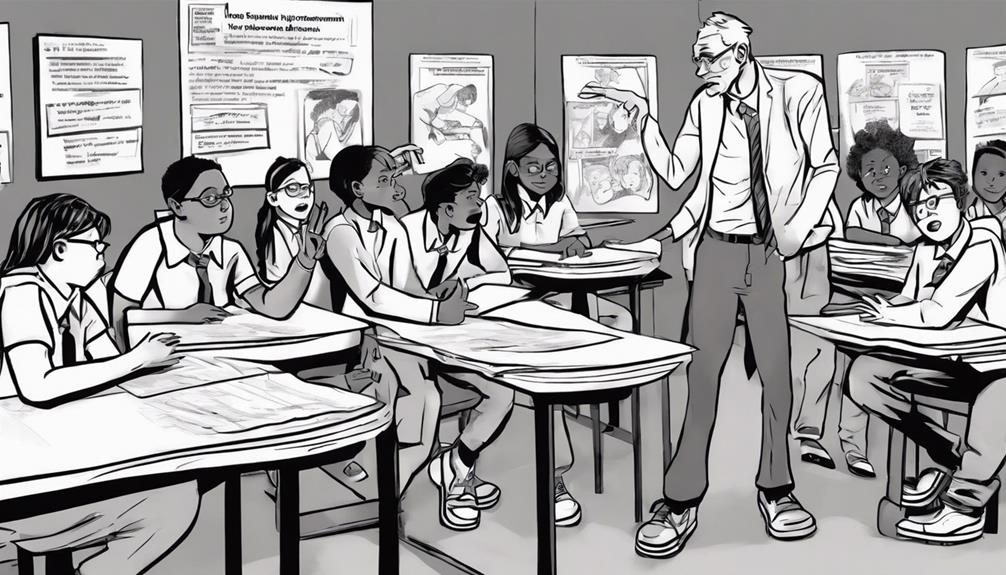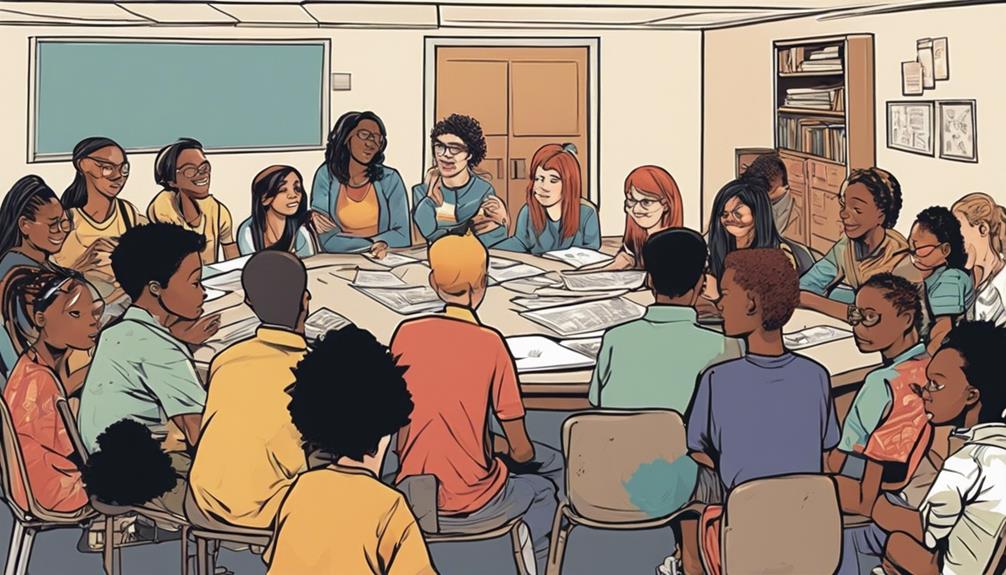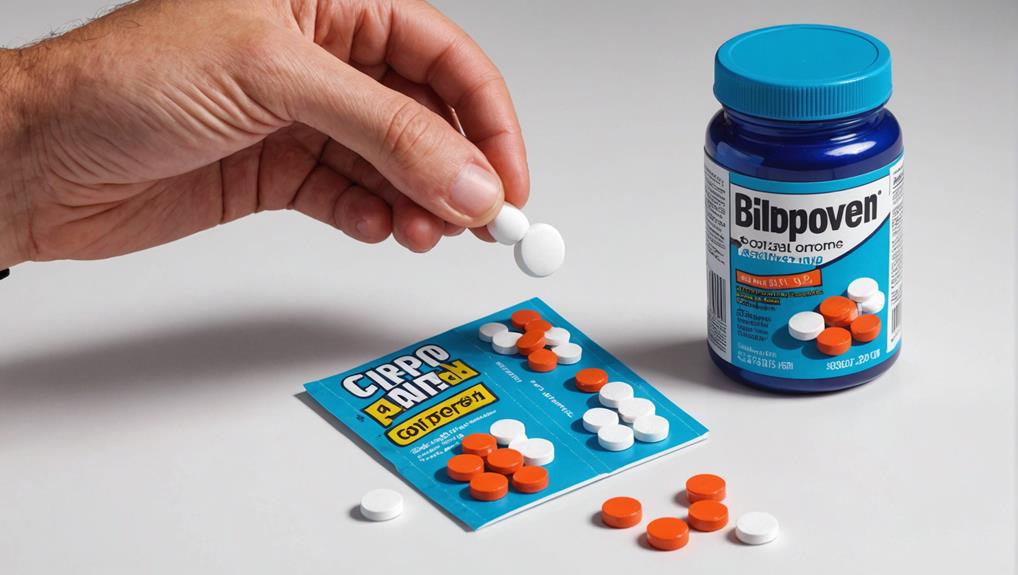Transform your classroom by implementing proactive management techniques like establishing systems to prevent disruptions and creating a safe, supportive space. When challenges arise, stay calm, avoid shaming, and focus on building trust with students. Strengthen relationships by learning names, fostering belonging, and showing interest in their lives. Keep students engaged with interactive activities, tech integration, and real-world connections. Remember, self-care is crucial; prioritize well-being, set boundaries, and seek support when needed. These strategies create a vibrant, inclusive environment promoting student success and teacher fulfillment. Find out more about transforming your classroom for the better!
Key Takeaways
- Establish proactive systems to prevent disruptions and foster a safe learning environment.
- Build strong bonds with students to create a sense of community and trust.
- Utilize reactive strategies like staying calm and avoiding shaming students.
- Engage students with interactive activities and real-world connections for effective learning.
- Prioritize self-care to maintain well-being and seek support when needed.
Proactive Classroom Management Techniques

Implementing proactive classroom management techniques is essential for maintaining a positive and productive learning environment. By anticipating potential issues before they arise, you can establish systems that prevent disruptions and create a safe space where students feel supported.
Building strong bonds and trust with your students not only fosters a sense of community but also encourages them to envision brighter futures for themselves. Remember, a proactive approach sets the tone for a successful learning experience, allowing you to address challenges before they escalate.
Reactive Classroom Management Tips

To effectively handle classroom disruptions, focus on employing proactive strategies that address issues as they arise. However, when faced with unexpected situations, reactive classroom management tips can help you navigate challenges smoothly.
Remember, staying calm and collected is key to maintaining a positive learning environment. Here are some tips to help you handle disruptions effectively:
- Avoid raising your voice to prevent escalating the situation.
- Refrain from resorting to shaming students, as it can damage their self-esteem.
- Resist the urge to remove students from the classroom unless absolutely necessary.
Strategies for Building Student Relationships

When establishing strong student relationships, prioritize learning all students' names to foster a sense of belonging and connection within the classroom community. Knowing each student by name demonstrates your interest in them as individuals and helps create a welcoming atmosphere where everyone feels valued.
Engaging in conversations about their interests, hobbies, or even sharing a laugh can further solidify these relationships. Spending informal time outside of class, like arriving early or staying late, can also show your dedication to getting to know them beyond the academic setting.
Effective Student Engagement Methods

Engaging students effectively involves fostering a dynamic learning environment that captivates their interest and encourages active participation. To achieve this, consider implementing the following engaging methods:
- Interactive Learning Activities: Incorporate group projects, interactive games, and hands-on experiments to make learning fun and memorable.
- Technology Integration: Utilize educational apps, online resources, and multimedia presentations to keep students engaged and enhance their understanding.
- Real-World Connections: Relate classroom concepts to real-life situations, current events, or personal experiences to make learning relevant and engaging.
Importance of Self-Care in Teaching

Prioritize your well-being as a teacher by recognizing the critical importance of self-care in maintaining a healthy and sustainable teaching practice. Teaching can be demanding, emotionally draining, and physically exhausting. Taking care of yourself isn't selfish; it's necessary for you to be at your best for your students.
Self-care involves setting boundaries, practicing mindfulness, staying physically active, getting enough rest, and seeking support when needed. By prioritizing self-care, you boost your resilience, reduce burnout, and improve your overall well-being.
Frequently Asked Questions
How Can Teachers Address Students With Behavioral Challenges in the Classroom?
Address students with behavioral challenges by staying calm, avoiding yelling or shaming, and listening to their perspectives. Utilize proactive strategies like creating a safe environment, building trust, and encouraging positive futures. Remember, patience and empathy are key.
What Are Some Ways to Handle Conflicts Between Students Effectively?
When handling conflicts between students effectively, avoid shouting or shaming. Stay calm, listen to all sides, and redirect focus with a word or action. Keep others engaged, provide a calming space, and prioritize building relationships.
How Can Teachers Encourage Student Participation in Classroom Discussions?
Encourage student participation in classroom discussions by fostering a welcoming atmosphere, acknowledging diverse perspectives, asking open-ended questions, actively listening, providing positive reinforcement, and creating a safe space for sharing ideas. Keep discussions engaging and inclusive.
What Strategies Can Be Used to Support Students With Diverse Learning Styles?
To support students with diverse learning styles, adapt your teaching like a chameleon. Offer visual aids, hands-on activities, audio resources, and flexible grouping. Provide choices for assignments and assessments, embrace technology, and encourage peer collaboration. Keep learning dynamic and inclusive.
How Can Teachers Maintain a Positive Classroom Environment During Challenging Times?
During challenging times, maintain a positive classroom environment by staying calm, showing empathy, and keeping students engaged. Avoid yelling, shaming, or removing students. Listen to all sides and use proactive strategies to foster trust and learning.
Conclusion
Transforming your classroom with effective management strategies is like sprinkling magic dust on your teaching space. By proactively preventing issues, building relationships with students, and prioritizing self-care, you can create a safe and engaging environment that fosters learning and growth.
So, grab your wand (or whiteboard marker) and get ready to wave away classroom chaos, sprinkle some positivity, and watch your students flourish in this enchanted learning space you've created.
Welcome to the classroom of your dreams!










